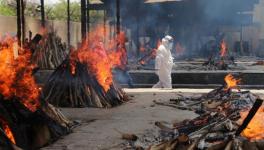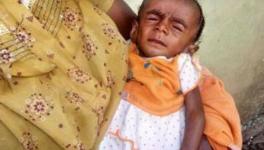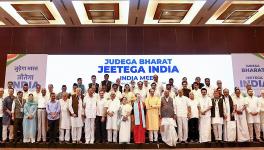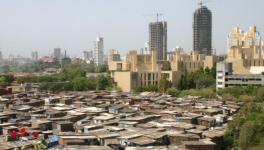India’s Second COVID Wave – Can the Govt Handle it?
India is facing a tsunami of COVID-19 infections, the so-called second wave. On April 7, the highest ever single-day new cases were recorded at 1.27 lakh, way above the peak of 97,894 recorded last year on September 16. [See chart below]
What is scarier is this: there is a rising trend and it looks like the peak is yet to be reached. Some experts predicted that new cases will peak by mid-April, but the whole of last year is littered with failed models and predictions. So, there should be no mistake in accepting that this is a very serious crisis which needs an equally astute response, and that too with speed.
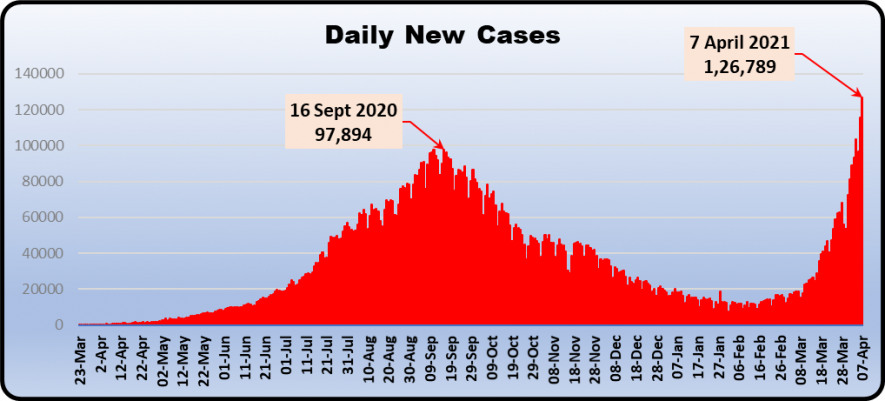
It has long been argued that India has not really faced the kind of COVID deaths that struck European countries and the US, Mexico and Brazil, and so the crisis should not be evaluated in their terms. India is better off, it is argued, because less people have died, despite having a very large number of cases.
This is a dangerous and self-serving argument because it makes the monumental mistake of discounting the losses suffered by people due to just falling sick with the virus. Till date, some 1.28 crore people have been officially recorded as confirmed COVID-19 cases in India beginning January 30, 2020, as per Health Ministry data. This is, of course an under estimate since millions more would have been affected but not tested and hence not counted.
Sero-surveys give an indication of the scale of disease spread – the third sero-survey results showed that about 21% of adults (over 18 years) and 25% of children (10-17 years) carried antibodies for the coronavirus, implying that they had been infected. This survey was done in December 2020-January 2021. This means that about 19 crore adults were potentially infected.
The loss of earnings, the burden on family budgets already stretched thin, the consequent deprivation in other spending if precious resources are diverted for treatment, the strong possibility of transmission to other family members because of bad living/housing conditions – all this means that people would have suffered enormously. Of course, many would get only mild symptoms, but we are still talking in crores. This grim reality is often ignored in the celebration for low death rates.
As earlier, the death rate among those confirmed as infected is still less, and currently it is about half the earlier peak daily death rate. [See chart below] While this is welcome, but again, care needs to be taken in analysing these figures. Even 685 persons dying in a day is unconscionable and chilling.
And, the death rate may climb because deaths will occur after a time lag, estimated at up to 14 days after hospitalisation. As the number of cases rises steeply, deaths also will unfortunately rise. Added to this will be the same old issues of availability of hospital facilities, especially critical care, ventilators etc.
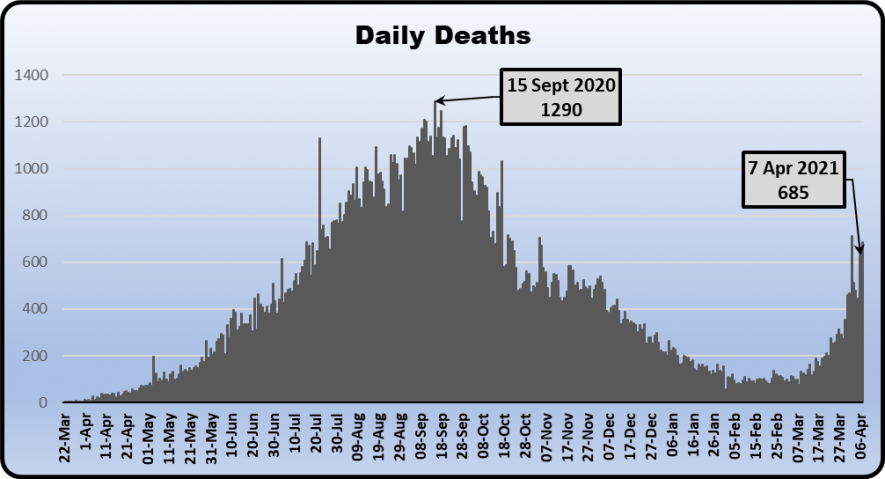
As with infections, the upward climb in daily deaths is ominously clear. The rate at which it has climbed is shocking – in two weeks, it has zoomed up by 151%. And the trend is still increasing. We are not yet at peak.
What Modi Govt Is Still Missing
First, in sheer epidemiological terms, the stress on testing and contact tracing has remained only on paper – or rather in words. Prime Minister Narendra Modi has intermittently repeated the mantra, most recently just a few days ago. But in reality, countrywide testing is still patchy, prone to ritualism and far short of what is required by the situation. Daily testing is slowly being ramped up as the infectious second wave takes hold, just like earlier it was delayed. [See chart below for all India testing]
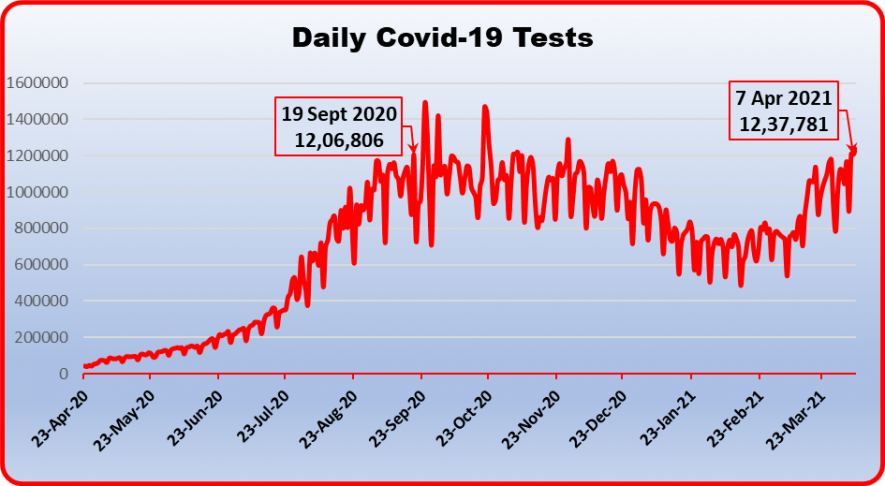
Besides this, contact tracing and all that follows it (isolation, treatment etc.) is far from meaningful. This is because the Modi government has put it all on the threshold of state governments.
Second, is the mismanagement of relations with state governments. There is nothing wrong in expecting states to carry out the primary work of pandemic prevention or mitigation. In fact, legally speaking, states are responsible for this and they are the ones who will have to implement it on the ground. But do states have the resources? Has there been any effort in the past one year to train people for contact tracing? Has the Modi government helped the states financially or technically to carry out this onerous responsibility? From all information available, no it has not. The Central government has taken to providing homilies to people and advisories to state government, reserving for itself other tasks like giving vaccines to other countries, making plans for this or that contingency, etc.
On April 8, Prime Minister Modi is scheduled to hold a meeting with state chief ministers on the pandemic. Eleven meetings were held with chief ministers of states before this, according to media reports. What is notable is that these meetings were mostly to give exhortations to follow advice, not for working out a common strategy.
The first meeting was held on March 20, 2020, days before the countrywide lockdown was announced by Modi on March 24 night. In this meeting, it appears, no mention was made of the impending plan to lockdown the country. This secrecy was completely unnecessary – people would have immensely benefitted from an advance notice. Similarly, for lockdown extensions or easing. All this was happening before COVID-19 hit its peak in September-November last year. Finally, the vaccine rollout started on January 16, without any meeting with chief ministers, which was finally held two months later on March 17.
Third, and perhaps most important, is that the Central government has been very tight fisted with money. A pandemic requires massive infusion of funds, not just in healthcare but also to support people who are affected by the disease, as well as the restrictions on normal economic activity. Last year, food grain distribution and Rs.500 per month for Jan Dhan account holders was provided for a few months. It was highly insufficient and that caused desperate people to undergo the most unbelievable torture – from walking hundreds of kilometers, to surviving on insufficient food, to lack of education, to lack of medical services for other needs, and so on.
This is not just to point at the past and lament. As described above, the surging pandemic is worsening with each passing day and to save the country’s people, effective action needs to be taken, correcting past mistakes. Otherwise, there is likelihood of much more suffering.
[Data collated by Peeyush Sharma]
Get the latest reports & analysis with people's perspective on Protests, movements & deep analytical videos, discussions of the current affairs in your Telegram app. Subscribe to NewsClick's Telegram channel & get Real-Time updates on stories, as they get published on our website.











